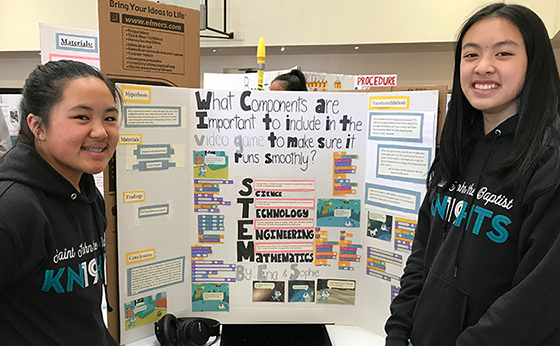School Launches STEM Fair with Science Projects Done at School
Science Buddies projects were a hit among students working on science and engineering projects for this California school's first STEM fair.
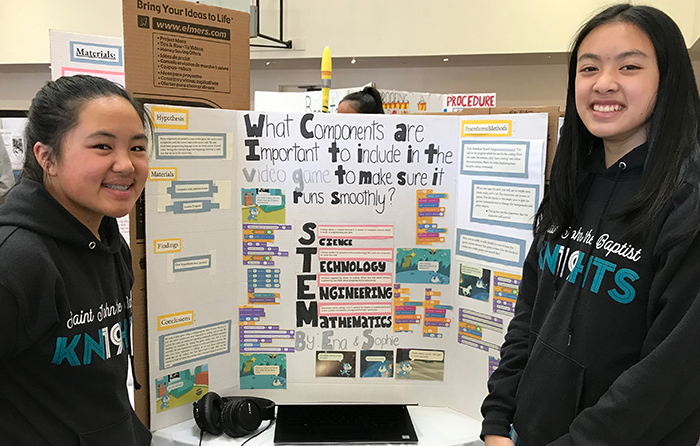
Students in grades K-8 at St. John the Baptist School in Milpitas, California recently showed off their hands-on science and engineering projects at the school's first ever STEM Fair. The school integrated a STEM Lab in 2017, and this year's STEM Fair is a sign of the school's continued commitment to hands-on STEM education. According to Arlene Ang, STEM Lab Coordinator at St. John the Baptist School, the STEM Lab has had tremendous impact on student engagement. "We have seen an increase in enthusiasm, interest, and desire to learn in our students. They are always asking when they will be going to the lab. Now, they get to handle, manipulate, and create instead of just watching videos or reading about it."
With the STEM Lab making such a positive difference, starting an annual STEM Fair was a logical next step. Arlene says the STEM Fair was a collaborative effort between the school administration, parents, and teachers. Running a schoolwide science fair is a big task, and a school's first fair takes careful planning and organization. For teachers and students alike, "the atmosphere in school the week prior to the event was one of excitement, anticipation, and nervousness," says Arlene.
At St. John the Baptist School, all students in grades K-8 (approximately 180 students) were required to submit a project for the STEM Fair. Even the pre-kindergarten class was involved, making art objects from recycled materials to display at the fair.
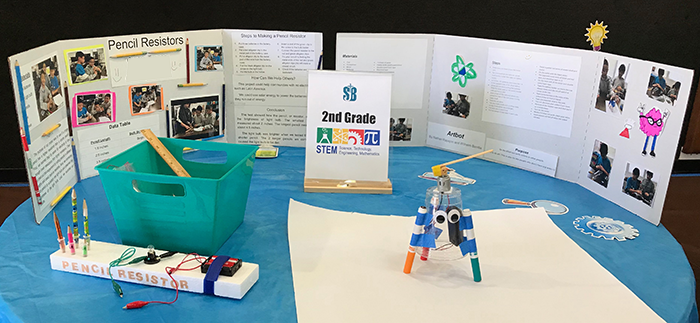
No Science Fair Homework Allowed
Most science fairs follow a similar format: find a project, do the project, present the project (often on a tri-fold display board). In months leading up to a school's science fair, teachers often guide students through a series of checkpoints to help ensure projects are selected, approved, started, and completed on schedule. While some parts of the project may be completed in class, many students end up doing the bulk of their experiments at home. St. John the Baptist School took a different approach. All work on STEM Fair projects was required to be done at school.
According to Arlene, "we required the projects to be done at school primarily to utilize the STEM Lab and give students access to materials that we stock in the lab. We also wanted to see them at work, assess their capabilities, collaboration, cooperation, and to ensure that they were using good time management."
Making time for projects to be done during school hours might sound like a challenge, but with everyone in consensus about the value of hands-on STEM, they worked it out. Arlene says that teachers at the school have a certain number of hours a week allotted to science. In addition, she meets with students in grades K-5 twice a week. (Another teacher meets with middle school students.) Elementary school students worked on their science and engineering projects during classroom science time and with Arlene in the STEM Lab.
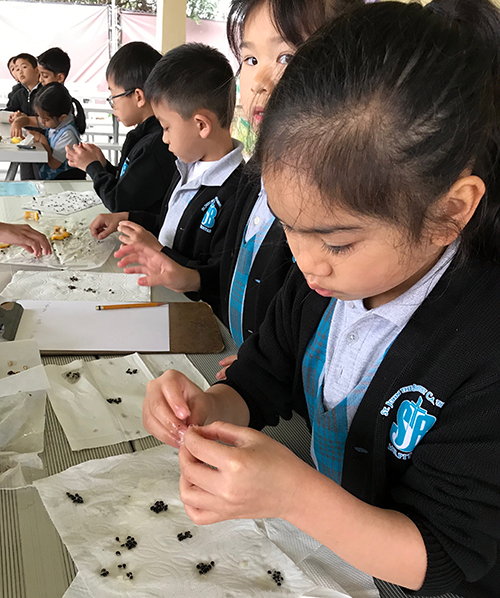
Finding Projects at Science Buddies
Students were not required to use projects from Science Buddies, but many did. More than 20 of the projects completed by students in grades K-8, many working in teams of 2-5, come from the Science Buddies library. Arlene says that teachers started talking about the STEM Fair last November, and most students began working on projects in January for the April fair.
"4th to 8th grade students were asked to search for possible projects, submit a proposal, and get approval from me or from the middle school science teacher," says Arlene, adding that some students used the Topic Selection Wizard at Science Buddies and some discovered projects searching by grade. "The ease of finding projects is a great feature—Topic Selection Wizard, browse by grade, project guides, and more," she notes.
Science Buddies projects students at St. John the Baptist School selected include: Art Bot, Pencil Resistors, Flippy, the Dancing Robot, Do Video Game Players Have Faster Reaction Times Than Non-Players?, Make a Robot Hand Using Drinking Straws, Building and Testing a Solar Oven, Satellite Science: How Does Speed Affect Orbiting Altitude?, Candy Chromatography, and Hacking the Air Gap.
The school's first STEM Fair was a success. The event was held on a Saturday, and Arlene admits that there was some concern over whether or not students would attend on a weekend. But the students showed up, and there was plenty of exciting STEM on display in the school's gymnasium.
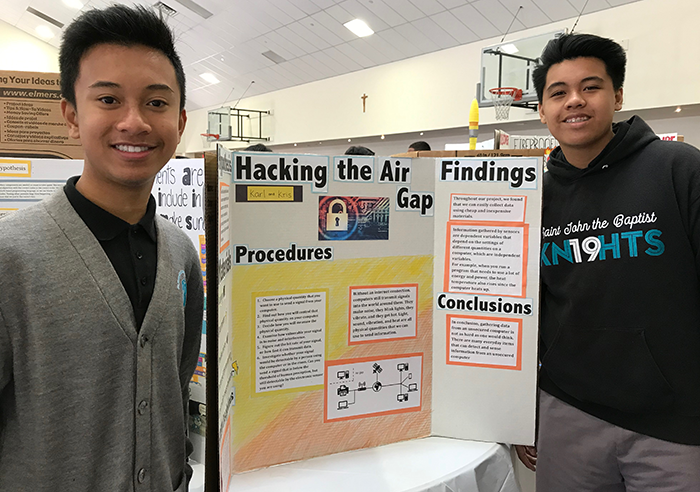
Science Buddies—A Trusted Resource for Hands-on STEM
Outside of the STEM Fair, Arlene says she uses Science Buddies as a starting point for planning NGSS-aligned curriculum. "When we begin study on topics/concepts in grades K-5, I go to Science Buddies first to find activities, projects, or experiments aligned with the Next Generation Science Standards."
Science Buddies earns a gold star from Arlene and her colleagues. "Science Buddies is very comprehensive! Like a one-stop shop. We appreciate that there is a multitude of projects for the different grade levels. Each project has a summary, background, materials, procedures, and expert help. The teacher tab has awesome content - like the lesson plans. We use Google Classroom and like that a project can be shared by that method."
"Science Buddies makes teaching science to multiple grades very manageable, fun, and less stressful. Thank you for constantly improving your site."
To learn more about how Arlene's school went about creating a STEM Lab, see her article in NCEA Talk.
To learn more about their STEM Fair, see St. John’s School Gears Up for First STEM Fair in The Milpitas Beat.
Learn more about the benefits of science fair projects in our five-part Why Do Science Projects and Science Fairs? blog series.
Share Your Science Buddies Story!
Have you used a science project, STEM activity, or Lesson Plan from Science Buddies in your class or program? We would love to hear your story! Email us at scibuddy@sciencebuddies.org and tell us how you use Science Buddies with students.
Categories:
You Might Also Enjoy These Related Posts:
- Making Recycling Sorting Machines—STEM Success
- Mini Trebuchets and a NM MESA Challenge
- Helping Students Build Coding Skills with Drones and Self-Driving Cars
- Middle School Student Codes to Improve Life with Visual Impairment
- Student Science Project - Designing and Coding a Video Game to Help People with Alzheimer's
- Teacher Combines Computer Science and Engineering Design for Middle School Students - STEM Success Story
- A Mirror Maze Success Story
- Paper Roller Coasters and Energy Transformation: STEM Teacher Success Story


